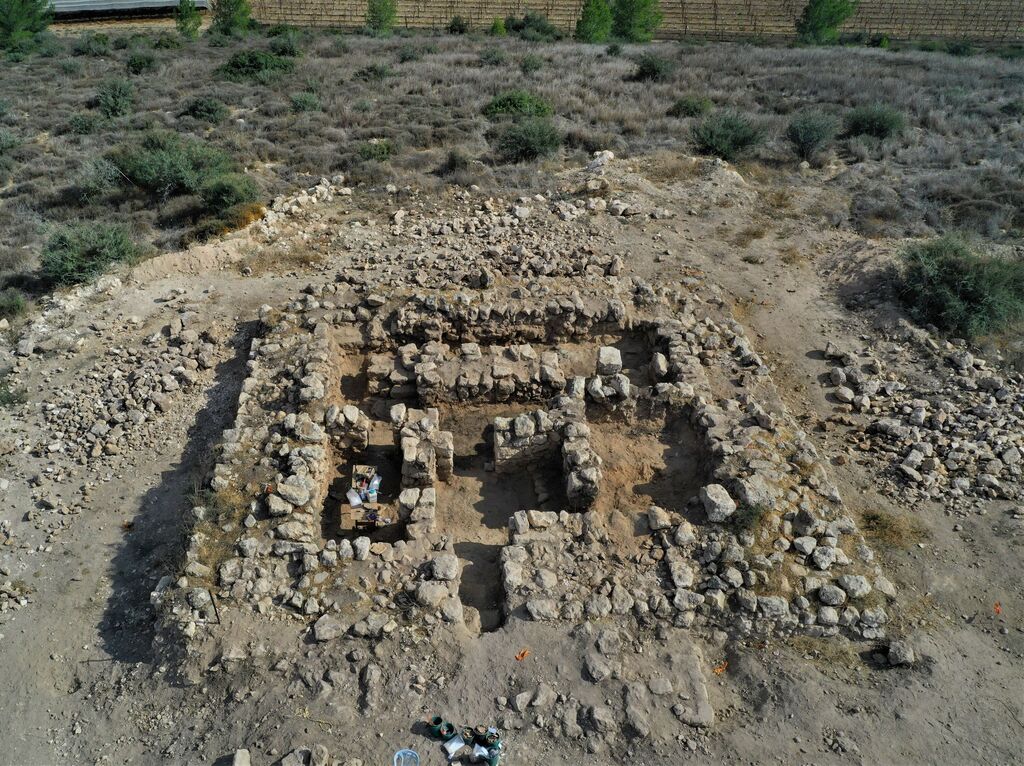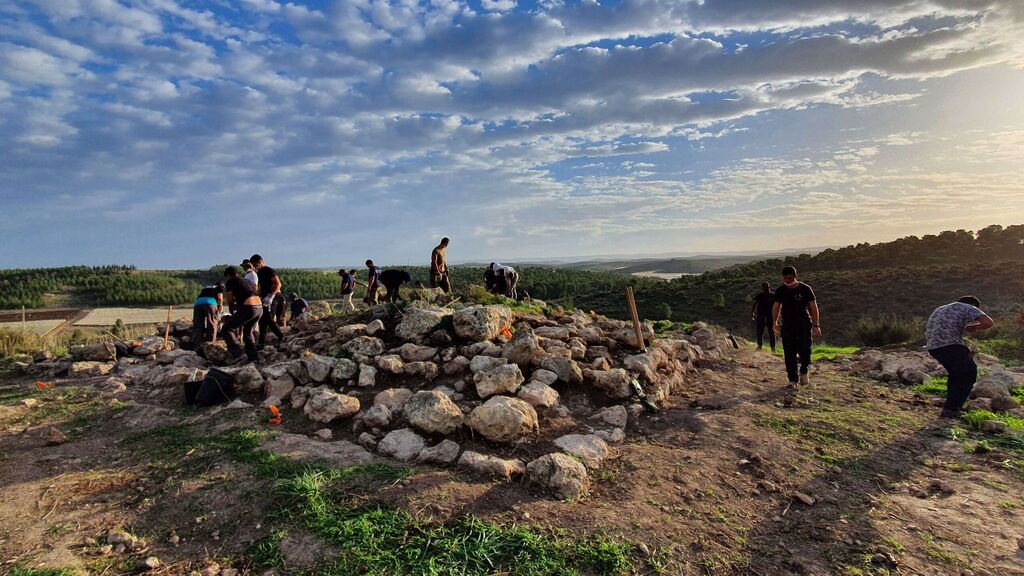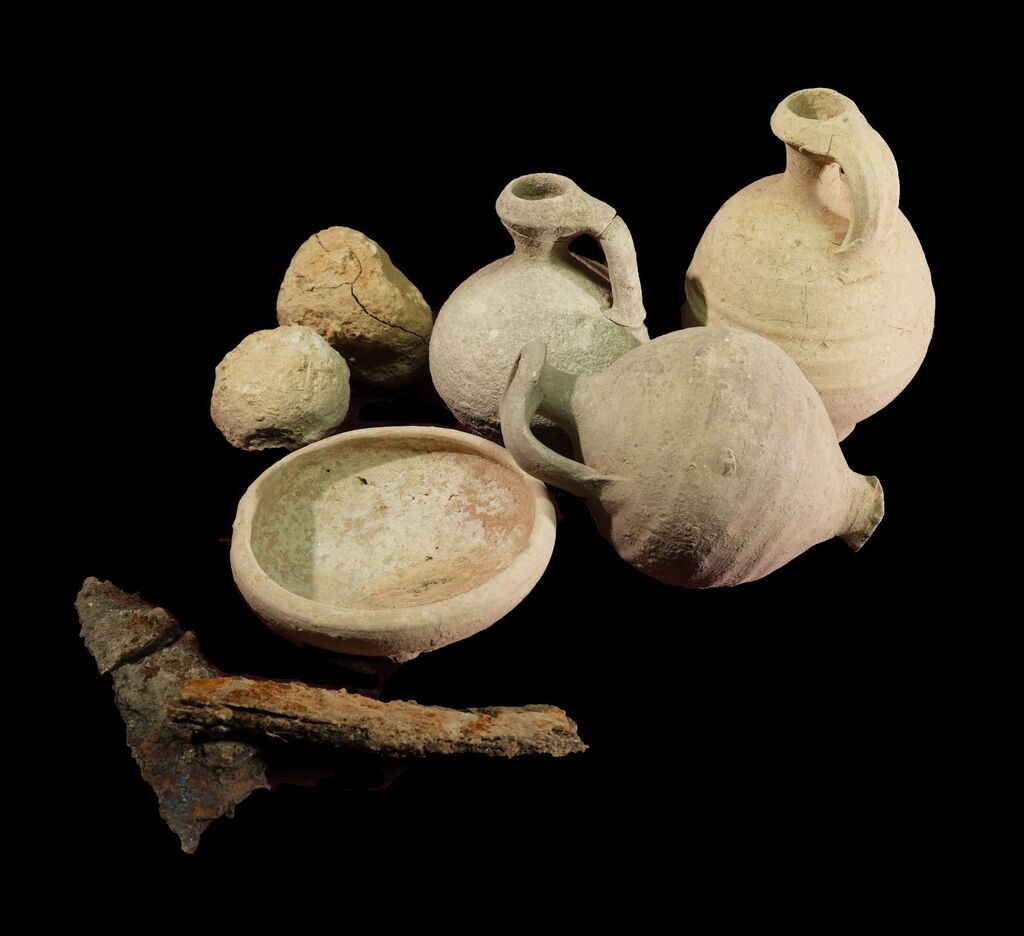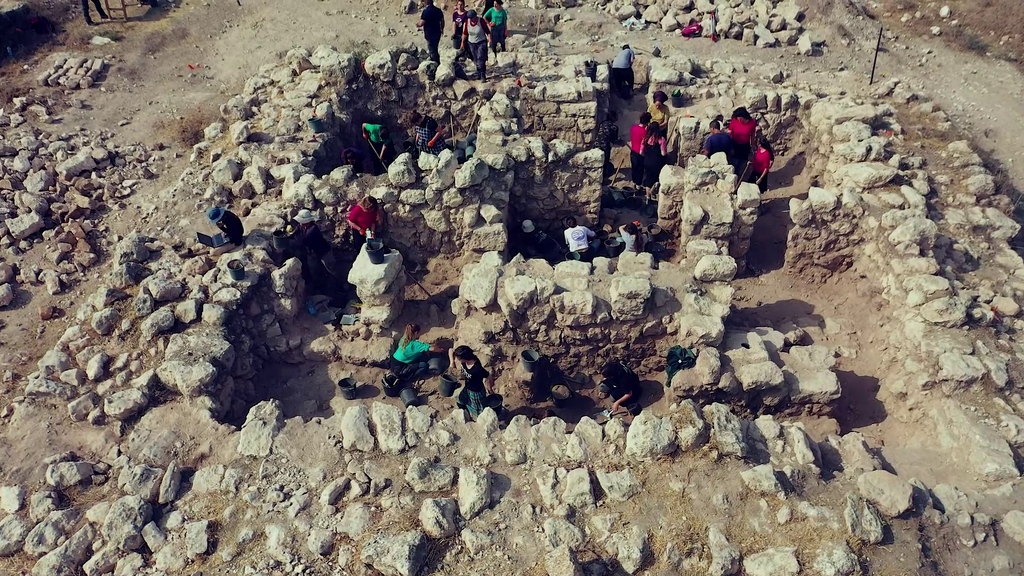A Hellenistic fortress that was destroyed and burned during the Maccabean Wars was recently uncovered during excavations in south-central Israel, the Israel Antiquities Authority said Tuesday.
The conflict is remembered up until today as the origin of the Jewish festival of Hanukkah, which this year is celebrated between November 28 and December 6.
4 View gallery


The Hellenistic fortress uncovered in the Lachish Forest
(Photo: Israel Antiquities Authority)
Researchers discovered an array of weapons, burnt wooden beams and dozens of coins in what they believe are the remains of a battle between the Maccabees and the Seleucids some 2,100 years ago in Lachish Forest.
Saar Ganor, Vladik Lifshits, and Ahinoam Montagu, excavation directors on behalf of the IAA, said that the site “provides tangible evidence of the Hanukkah stories".
"It appears that we have discovered a building that was part of a fortified line erected by the Hellenistic army commanders to protect the large Hellenistic city of Maresha from a Hasmonean offensive. However, the finds from the site show that the Seleucid defenses were unsuccessful; the building was badly burnt and devastated by the Hasmoneans.”
The excavation revealed 15 square meters of the building, planned as a well-fortified unit. The external walls, no less than 3 meters wide, were built of large stones and had a sloping outer glacis to prevent scaling attempts. The inside of the structure was divided into seven rooms, preserved to an exceptional height of roughly two meters.
The excavation uncovered a stairwell leading to a second floor, which was not preserved. The building is estimated to have been about five meters high.
The site is placed on the summit of a high hill commanding a view of the ancient Road of the Kings, which ran along the Nahal Lachish streambed and connected the coastal plain to the central highland ridge. The building overlooks Maresha, the largest Hellenistic city in the area and the capital of Idumea in the Hellenistic period.
During the excavation, thousands of large stones that had collapsed from the upper part of the building were removed. A massive destruction layer, about half a meter thick, was discovered beneath the stones. The layer yielded hundreds of finds, including pottery, slingshots, iron weapons, burnt wooden beams and dozens of coins dated to the late second century BCE.
“Based on the finds and coins, the building’s destruction can be attributed to the Hasmonean leader John Hyrcanus' conquest of the region of Idumea in around 112 BCE,” one archaeologist said.
The Hasmoneans, whose rebellion against Hellenistic rule and the Seleucid dynasty followed the anti-Jewish decrees of Antiochus IV, waged many battles against the Seleucid army. John Hyrcanus’s conquests, described in the Books of the Maccabees and the accounts of the historian Josephus, led to the Hasmonean state’s southward expansion.
IAA Director-General Eli Eskozido said, “the stories of the Maccabees are coming to life before our eyes. In a few days, we will be celebrating Hanukkah, whose central theme is the Hasmoneans’ defeat of the Hellenists, leading to the establishment of the first independent sovereign Jewish entity. The Hasmoneans could have had no idea that 2,000 years later, students living in the State of Israel would be following in their footsteps. It is extremely exciting.”
Construction and Housing and Jerusalem Affairs Minister Ze'ev Elkin said that “the impressive discoveries from the excavations in the Lachish region demonstrate the history of our great and wonderful land and the story of Hanukkah.”
Culture and Sports Minister Chili Tropper pointed out that the discovery is “a classic example of how traditional, well-known and well-loved stories become part of the historical and archaeological record. The building’s excavation reflects the glorious roots of the Jewish people in the Land of Israel and brings the Hanukkah stories to life.”
The site will undergo conservation and will be opened to the general public as one of the sites along the Kings of Judah Road, which is currently under development.




